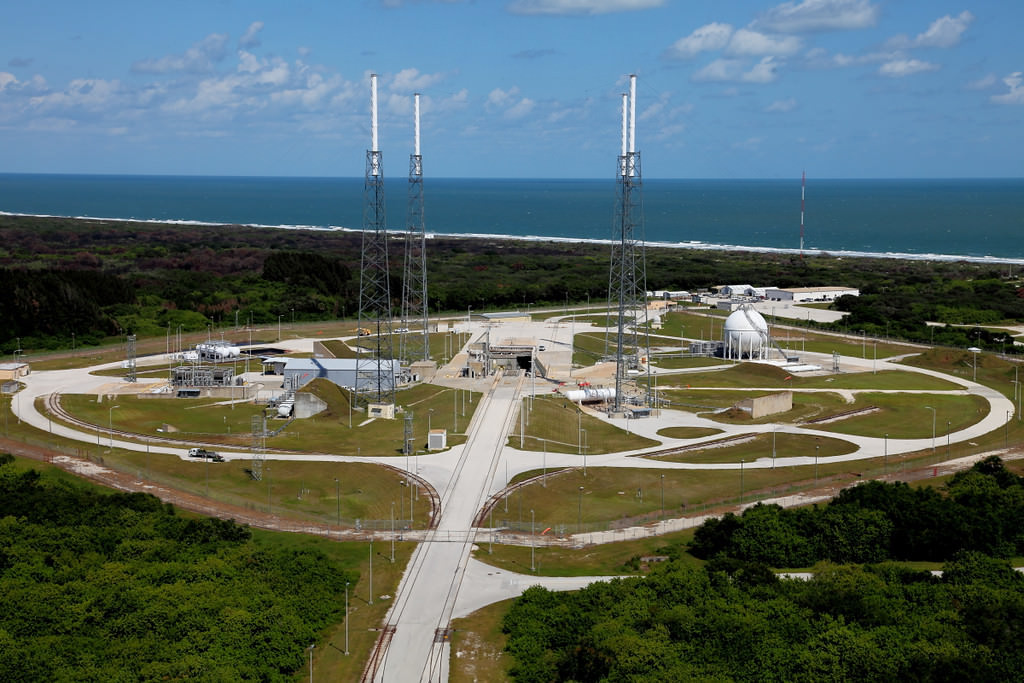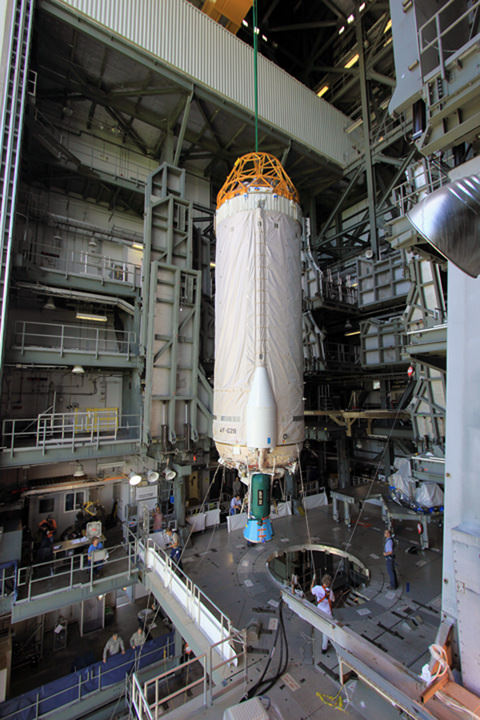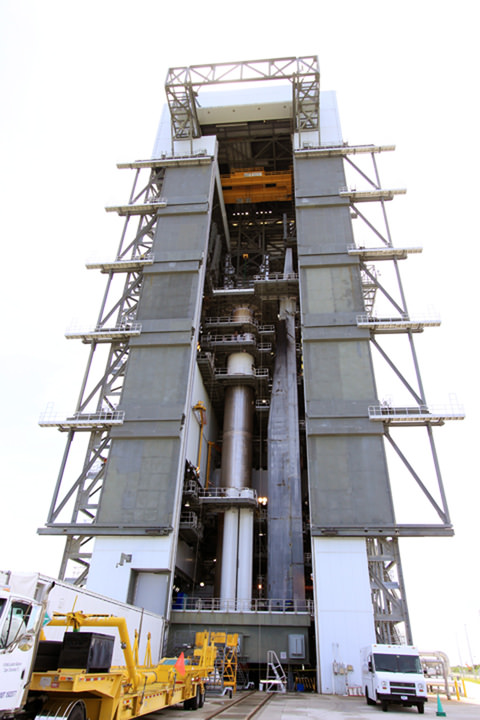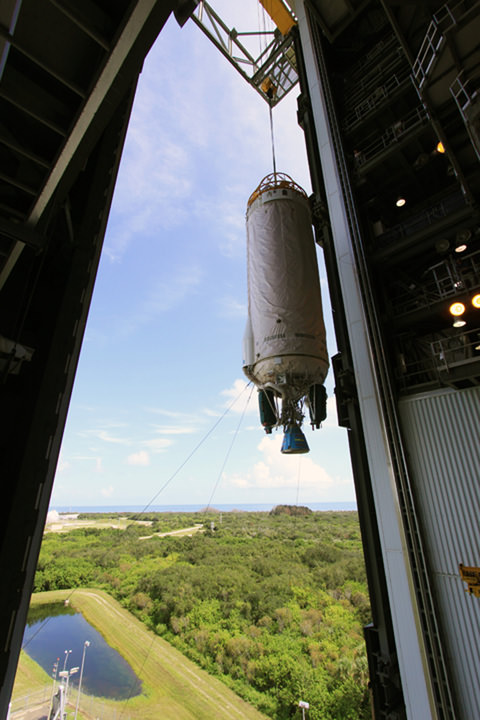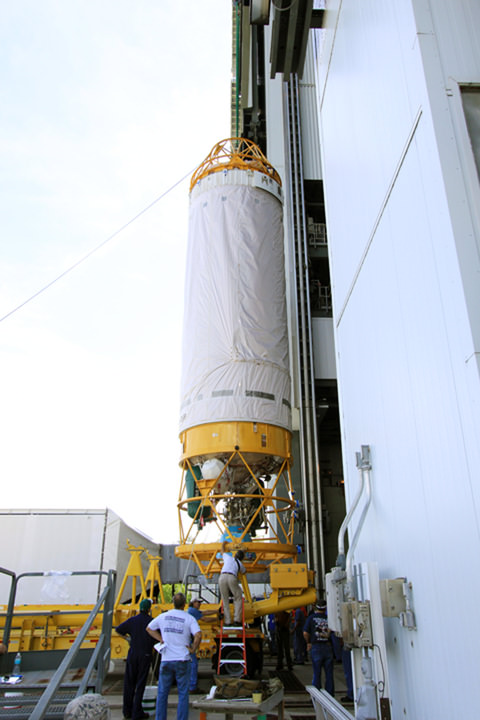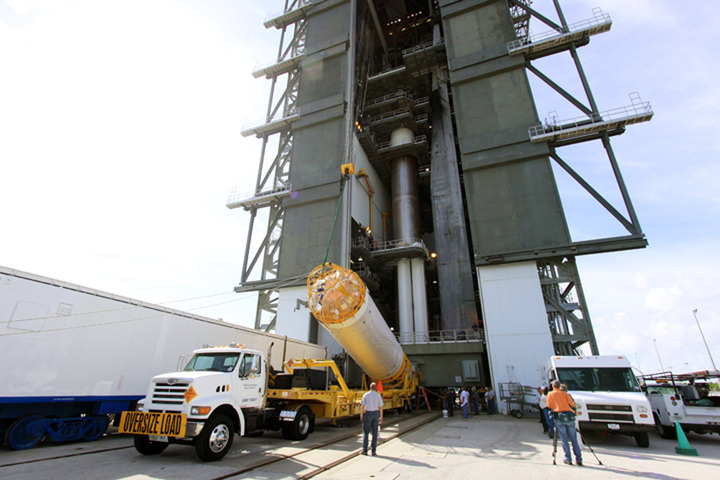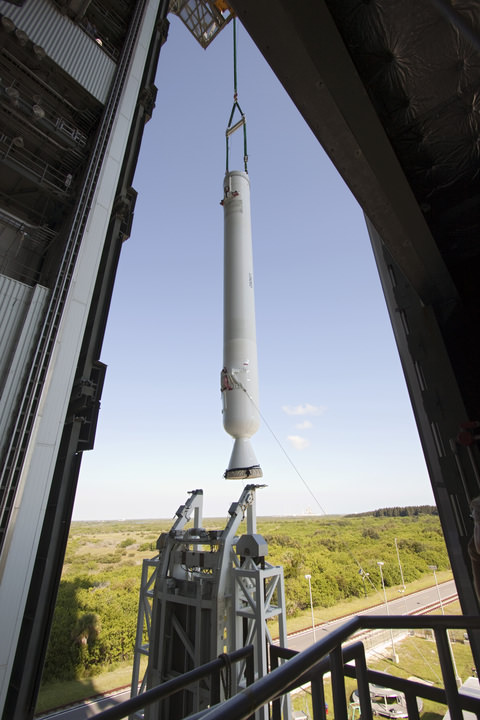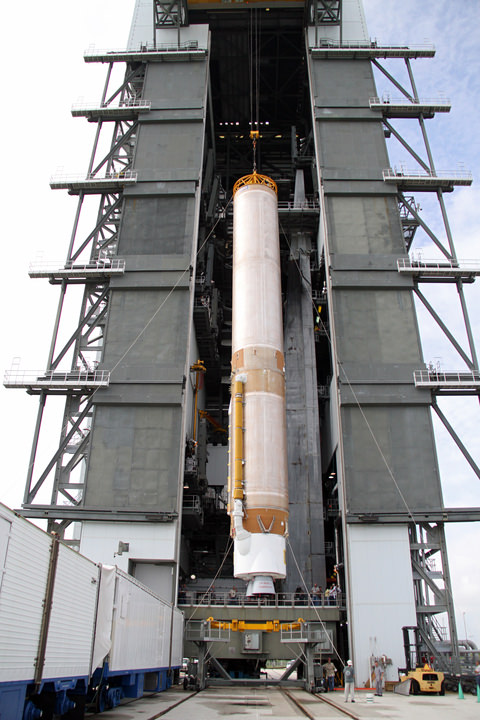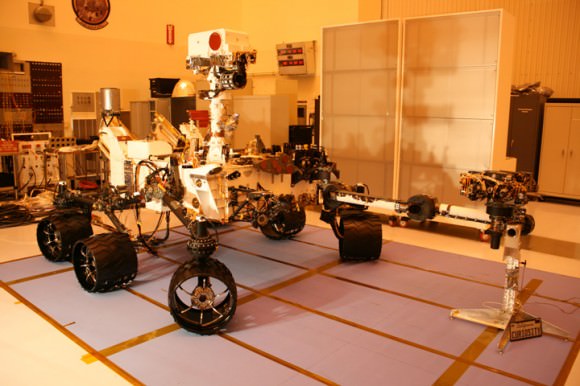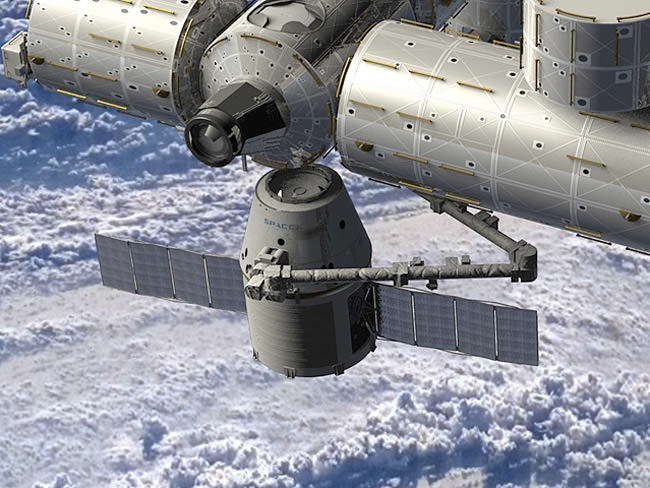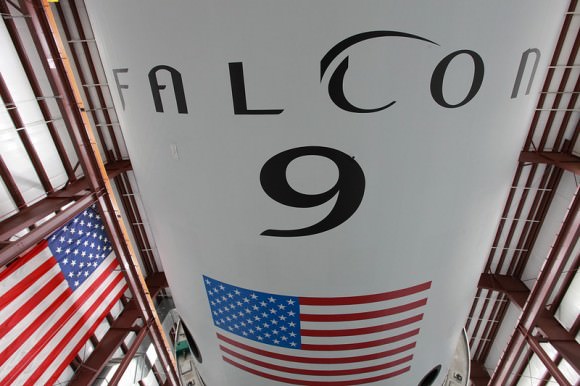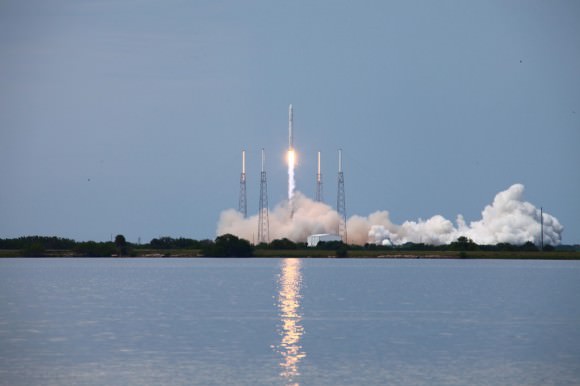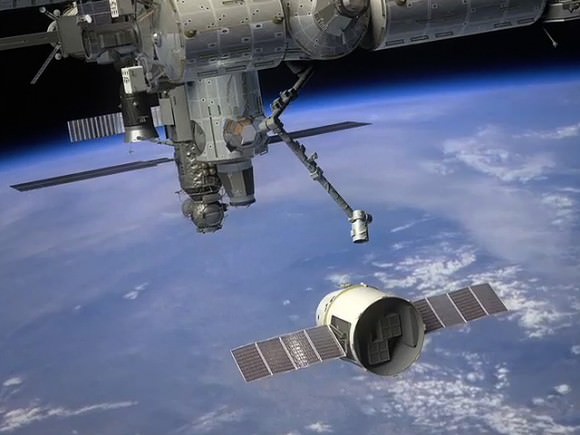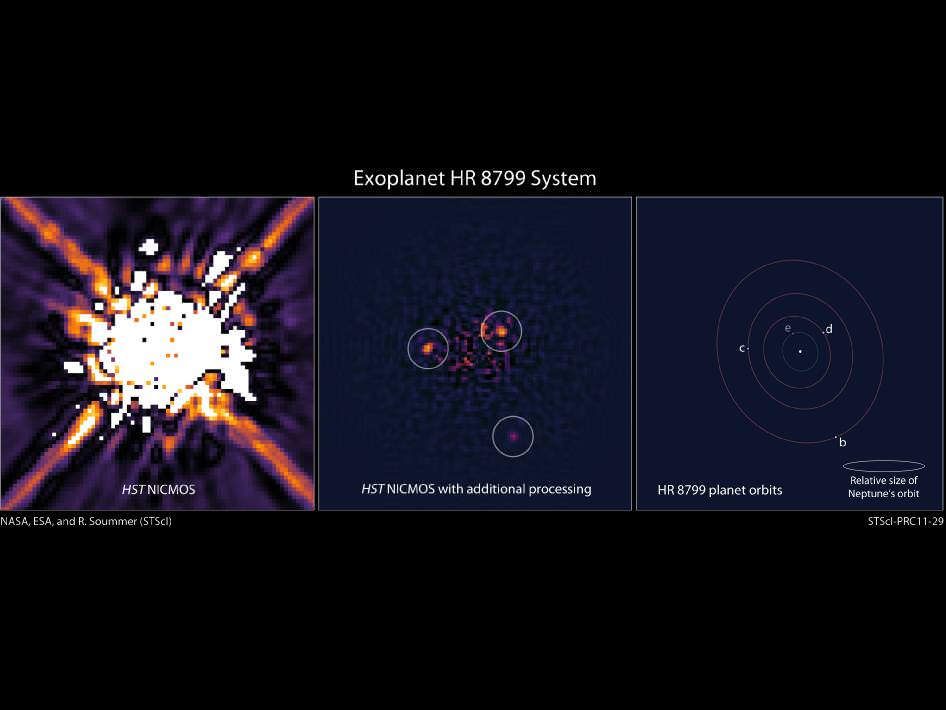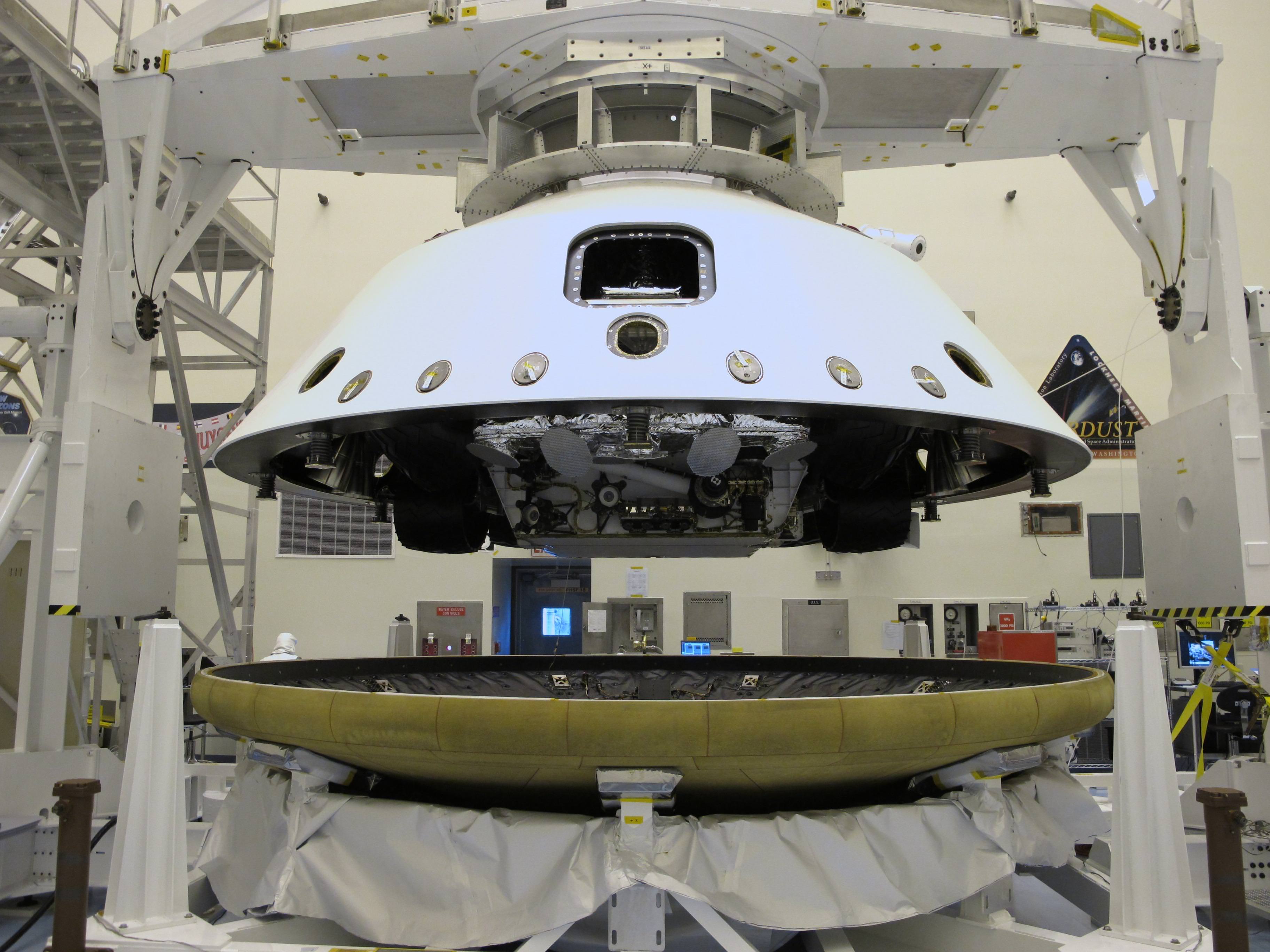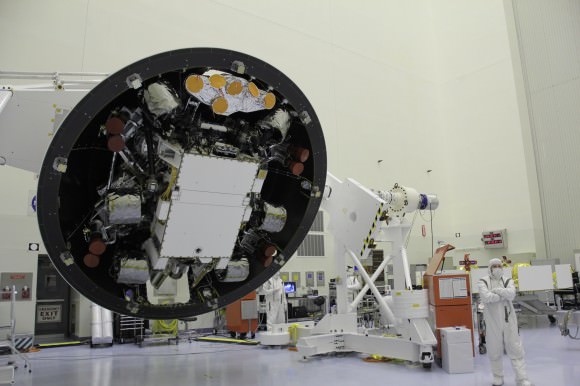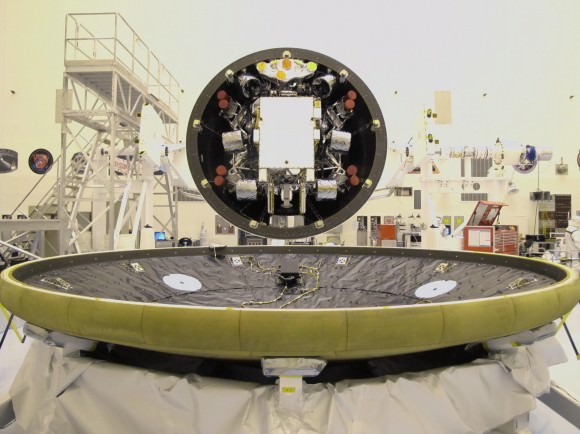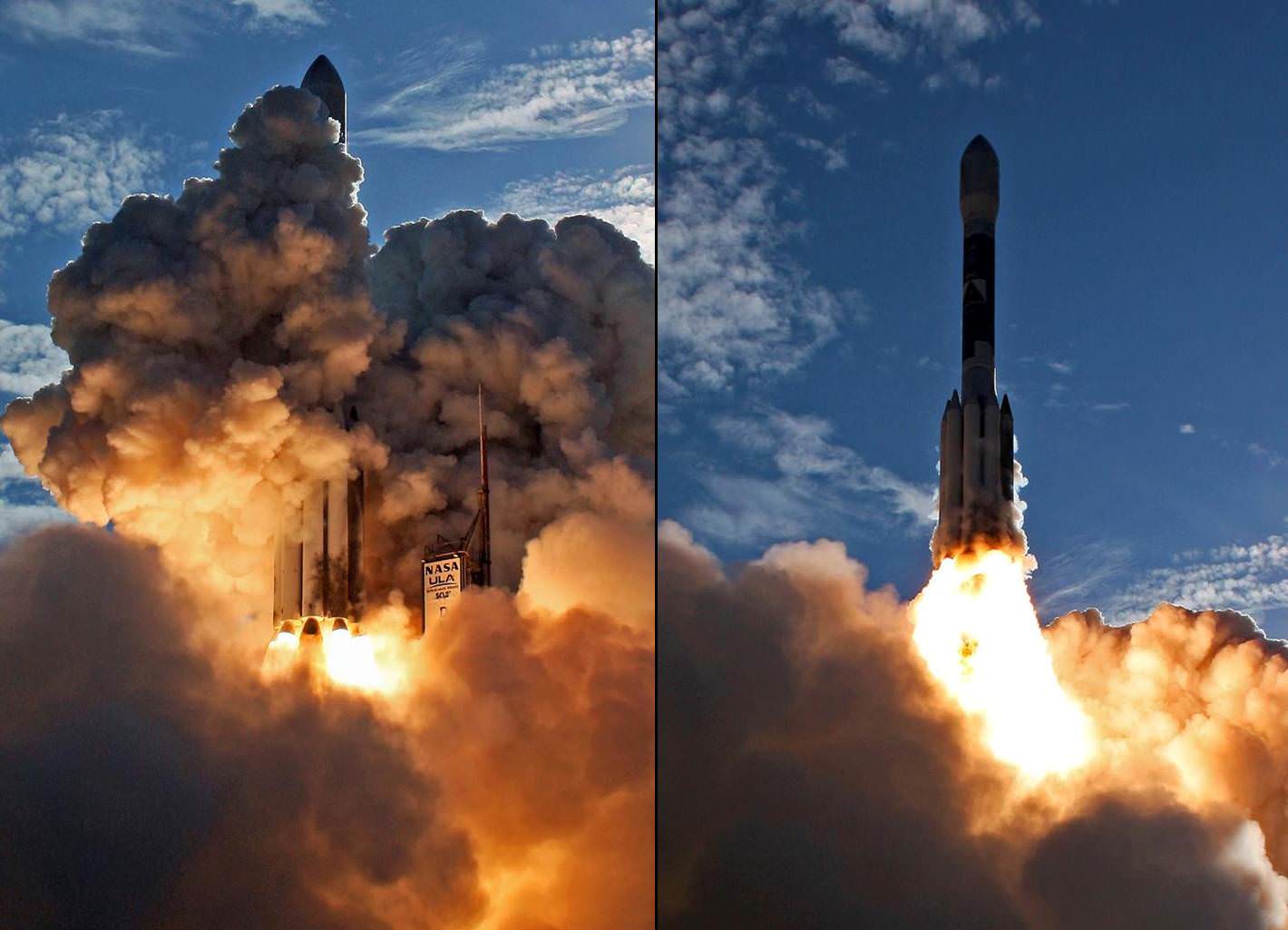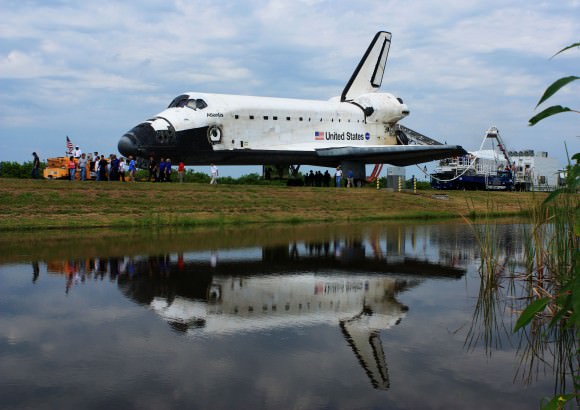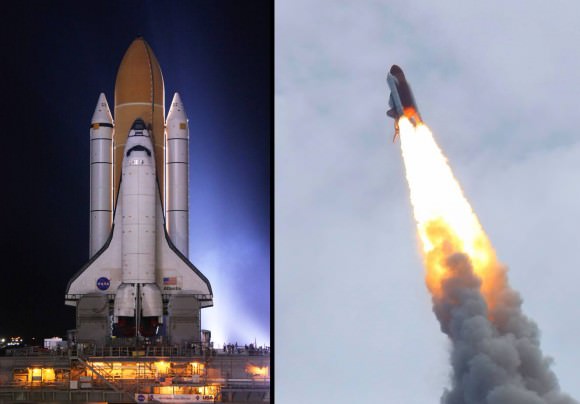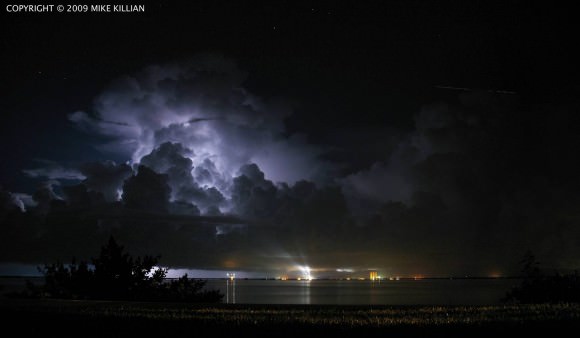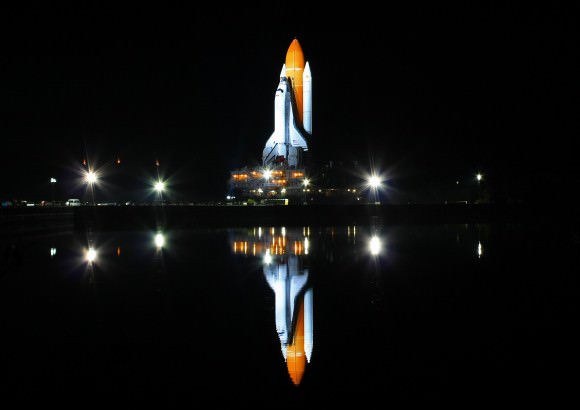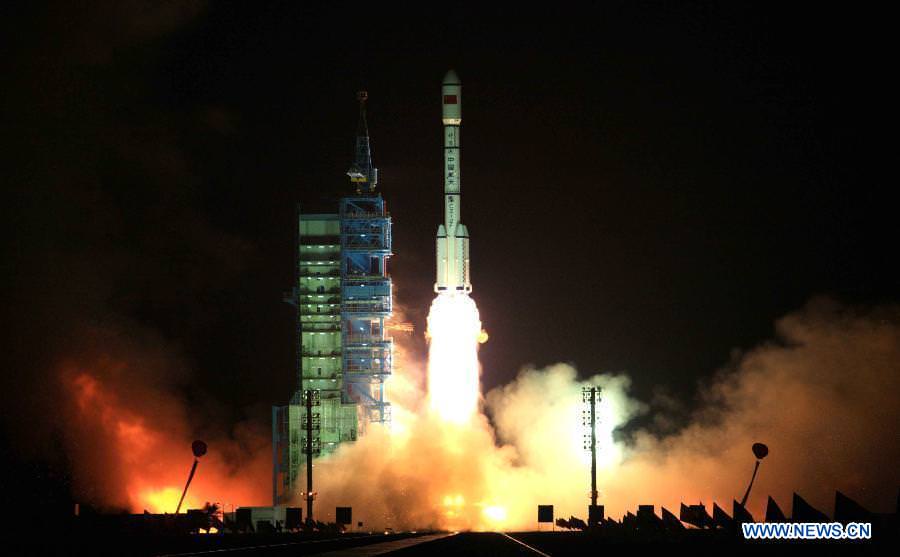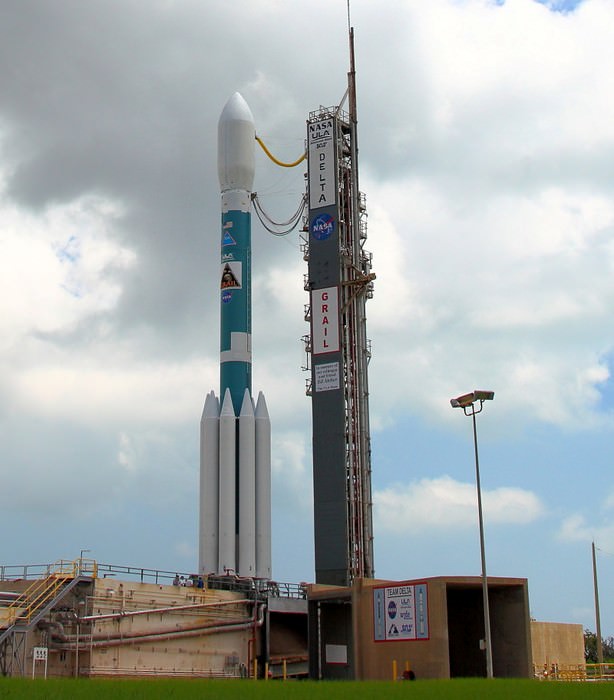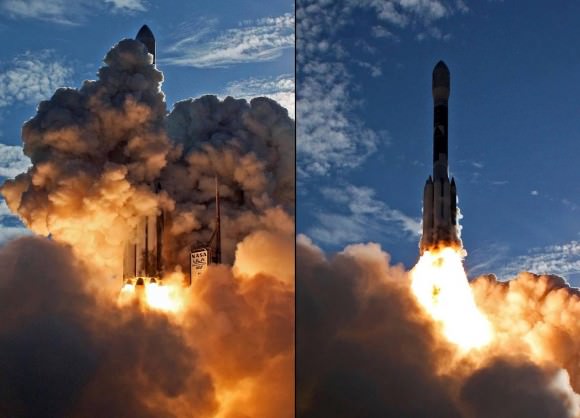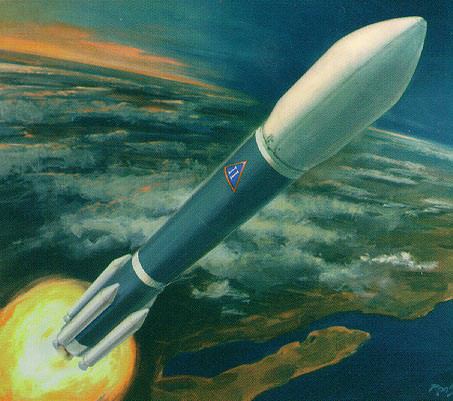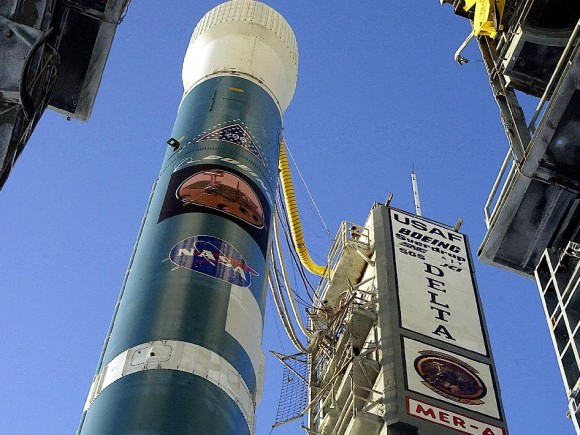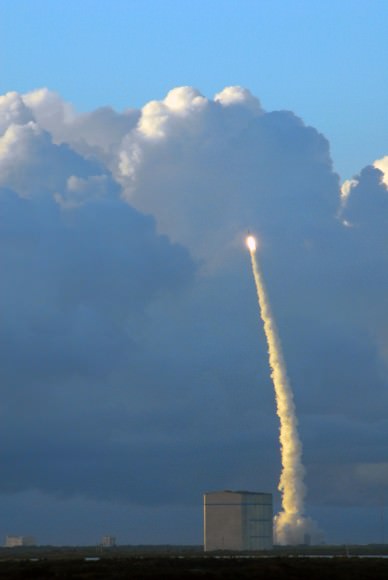[/caption]
CAPE CANAVERAL, Fla — One of the more dramatic buildings operated by United Launch Alliance (ULA) at Kennedy Space Center in Florida is the Vertical Integration Facility or VIF as it is more commonly known. It is in this facility that expendable launch vehicles are brought, lying on their sides – and then hoisted into the vertical position for launch. The current resident in the VIF is the Atlas V 541 (AV-028) that is slated to launch the Mars Science Laboratory (MSL).
At the top of the 292 –foot-tall structure is a 60 ton crane that initially is used to lift the Atlas’ first stage into the vertical position. The payload, ensconced in the protective fairing, is assembled elsewhere. Once it arrives at the VIF, it is hoisted high into the air using the same crane and then mated with the top of the launch vehicle. Given the delicate nature of this operation technicians take their time in lifting the precious cargo and maneuvering it over the rocket.
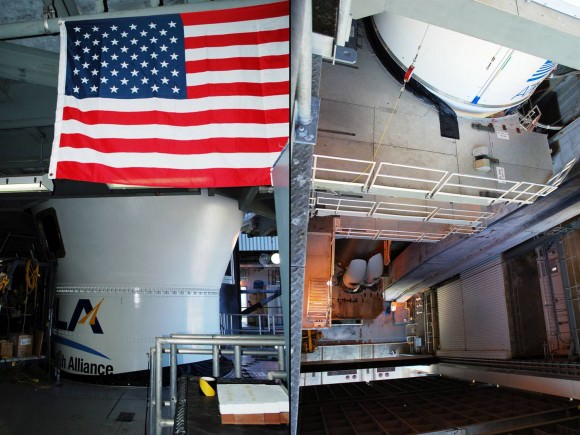
“You get the most amazing view from the top of the VIF,” said Mike Woolley of United Launch Alliance. “From this level you can clearly see not just Launch Complex 41, but a great deal of Florida’s Space Coast.”
Once the fairing and its payload have been safely affixed to the top of the rocket, the doors are opened up and the Atlas V is then rolled out to the adjacent Space Launch Complex-41 (SLC-41).
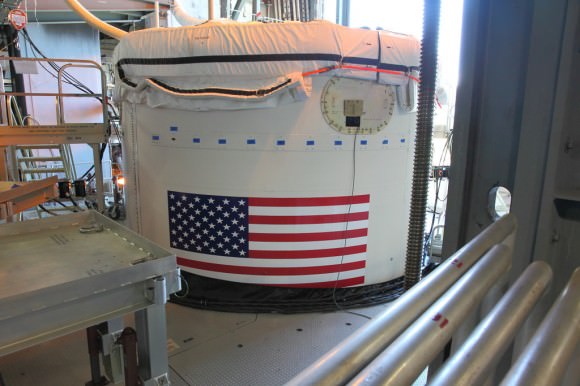
“Once the Atlas V is fully assembled, the completed vehicle is rolled, in the vertical, out to the launch pad.” Woolley said.
Currently on the fifth level the upper part of the Centaur, the all-important rocket that will send the rover on its way to Mars, covered in a protective layer of white plastic, is visible.
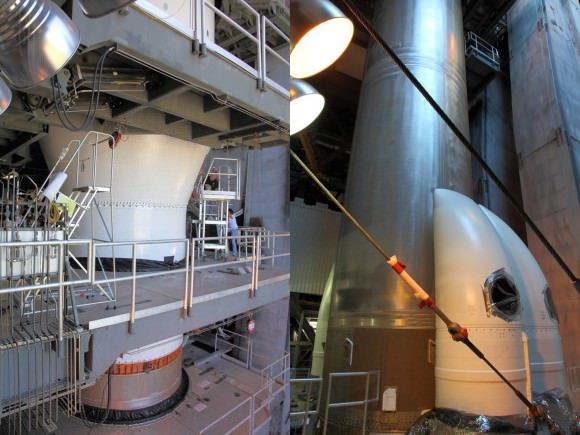
Descending down the length of the Atlas V, level by level one gains an appreciation for the sheer scale of the Atlas rocket, its solid rocket motors and the attention to detail needed to launch payloads out of Earth’s gravity well.
On Level One the top of the Atlas’ Solid Rocket Motors (SRMs) produced by Aerojet are visible. At the ground floor, one has the ability to look up (somewhat, platforms and rigging block your view) the length of the rocket. On the ground level, one can plainly see that the twin RD-180 engines are Russian-made – the Cyrillic lettering still grace the engines’ nozzles.
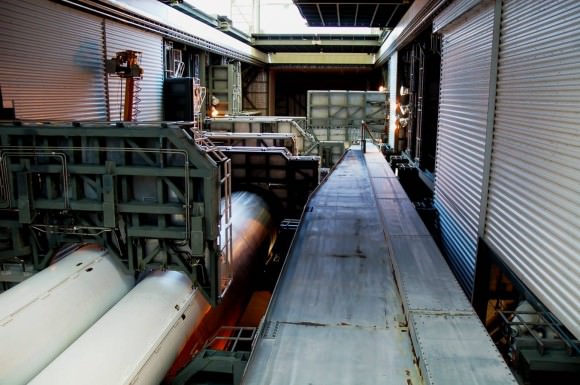
MSL is the next planetary mission on NASA’s docket, more commonly known as “Curiosity” is a nuclear-powered rover about the size of a compact automobile.
Curiosity is currently slated for a Nov. 25 launch date at 10:21 a.m. EDT from Cape Canaveral Air Force Station’s Space Launch Complex 41 (SLC-41). Members of the media (myself included) got to see the Atlas for this launch being lifted into the air in preparation for the November launch when we were being escorted back to the NASA/LSC press site after the GRAIL launch was scrubbed (GRAIL would go on to be launched two days later).

